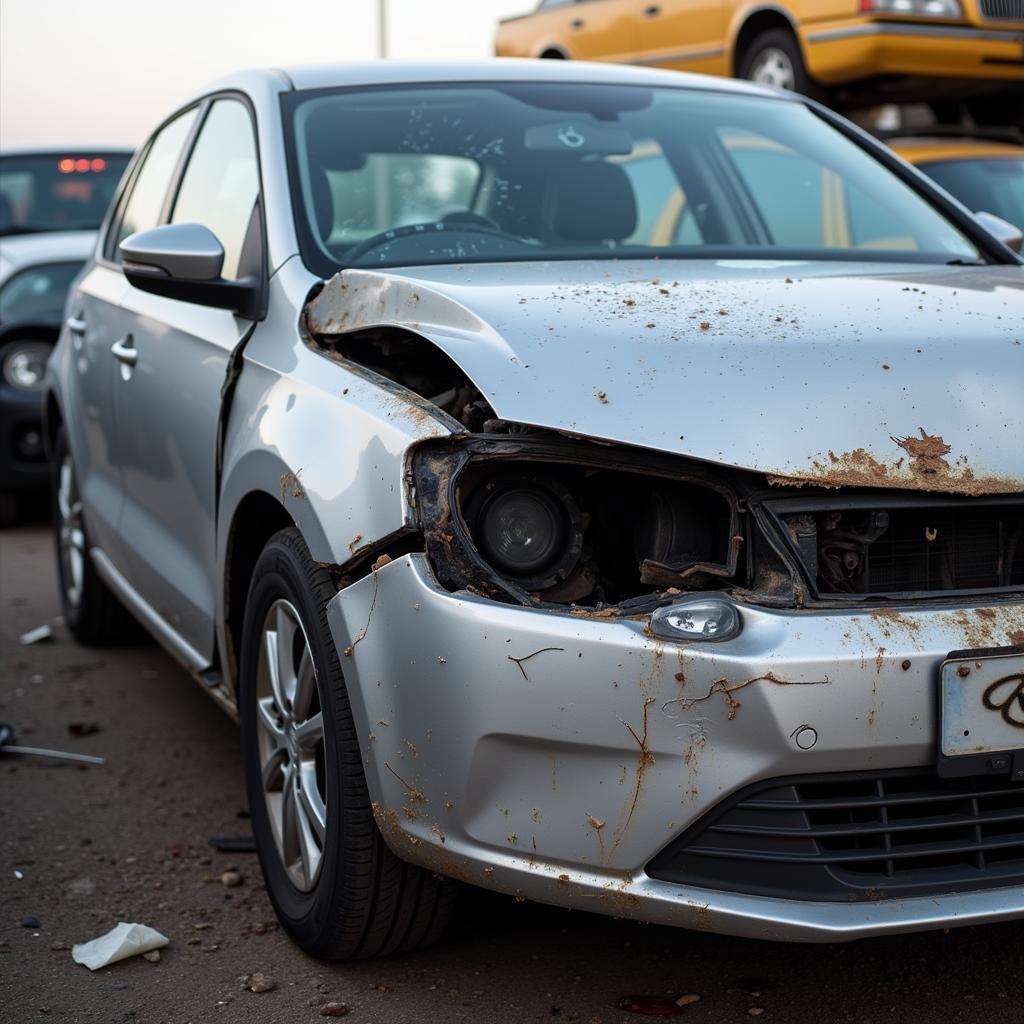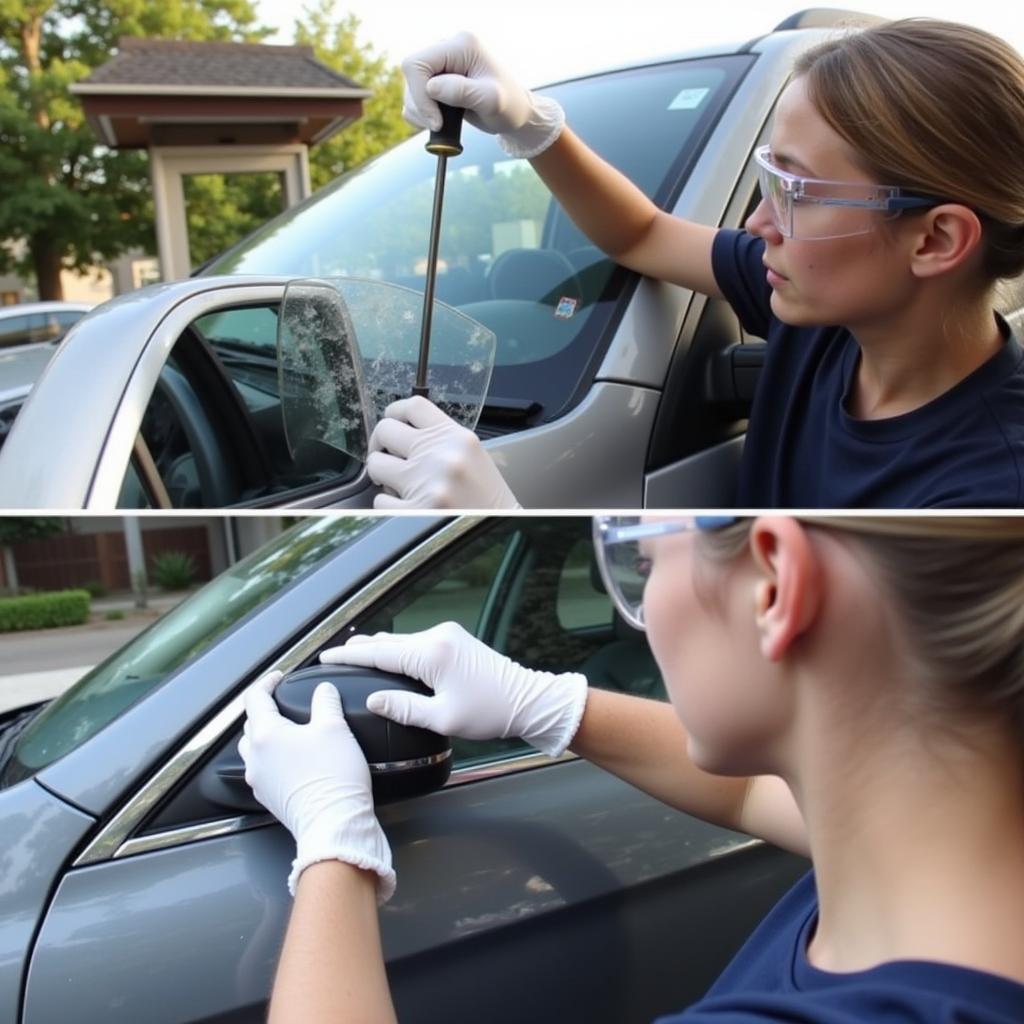Fixing Car Bumps, whether minor door dings or more significant collision damage, can be a daunting task. This guide provides a practical, step-by-step approach to understanding and addressing those unsightly blemishes, helping you restore your car’s appearance and potentially save money on professional repairs.
Understanding the Different Types of Car Bumps
Not all car bumps are created equal. Identifying the type of damage is the first step towards effective fixing car bumps. We’ll explore the common types, from minor paint scratches to deeper dents requiring more advanced techniques.
Minor Scratches and Scuffs
These are superficial damages that affect only the clear coat or paint layer. Often caused by minor scrapes against objects like bushes or shopping carts, they can often be addressed with DIY solutions.
Small Dents and Dings
These are minor indentations in the car’s body panels without significant paint damage. Think of those pesky door dings in parking lots! Paintless dent repair (PDR) is a popular option for fixing car bumps of this nature.
Larger Dents with Paint Damage
More substantial impacts, like minor collisions, often result in larger dents accompanied by chipped or cracked paint. These require more involved repairs, including body filler and repainting.
Creases and Sharp Dents
These complex dents involve sharp bends or folds in the metal, making them more challenging to repair. Professional bodywork is usually necessary for fixing car bumps of this severity.
DIY Solutions for Fixing Minor Car Bumps
For minor scratches and small dents, you might be able to tackle the repairs yourself. This can save you money and provide a sense of accomplishment.
Fixing Minor Scratches with Rubbing Compound
Rubbing compound is a mild abrasive that can remove minor scratches and restore the shine to your car’s paint. Apply a small amount to a clean, soft cloth and gently rub the affected area in a circular motion.
Using a Plunger for Small Dents
Believe it or not, a simple suction cup plunger can sometimes work wonders on small dents. Wet both the plunger and the dented area, then firmly press and pull the plunger. This can often pop the dent back out.
DIY Dent Repair Kits
Numerous dent repair kits are available on the market, offering tools and materials for tackling small to medium-sized dents. These kits typically involve adhesive tabs and pulling tools to gradually reshape the dented area.
When to Call a Professional
While DIY methods can be effective for fixing car bumps, more complex damage requires professional expertise. Here are some situations where seeking professional help is crucial.
Significant Paint Damage
If the paint is chipped, cracked, or deeply scratched, a professional body shop can ensure a seamless and color-matched repair.
Large or Complex Dents
Creases, sharp bends, and large dents often require specialized tools and techniques beyond the scope of DIY repairs.
Structural Damage
If the dent is accompanied by damage to underlying components, such as the frame or chassis, it’s essential to have a professional assess and address the structural integrity.
Preventing Car Bumps
Prevention is always better than cure! Here are some simple tips to minimize the risk of car bumps:
- Park in less congested areas.
- Be mindful of opening doors in tight spaces.
- Maintain a safe following distance while driving.
- Consider installing protective accessories like door guards.
Conclusion
Fixing car bumps is an inevitable part of car ownership. By understanding the types of damage and available repair options, you can make informed decisions about tackling the issue yourself or seeking professional assistance. Remember, preventing bumps in the first place is always the best strategy! For any assistance or advice, feel free to connect with us at Autotippro. You can reach us at +1 (641) 206-8880 or visit our office at 500 N St Mary’s St, San Antonio, TX 78205, United States.
“A small dent can be easily overlooked, but addressing it promptly can prevent further damage and maintain your car’s value,” says John Smith, Senior Automotive Technician at Autotippro.
“Choosing the right repair method for fixing car bumps depends on the severity and type of damage. A professional assessment can help you determine the best course of action,” adds Jane Doe, Lead Bodywork Specialist at AutoTipPro.
FAQ
- How much does it typically cost to fix a car dent?
The cost varies depending on the size and location of the dent.
- Can I use household items for fixing car bumps?
Some household items like plungers can be used for small dents, but be cautious.
- Is PDR suitable for all types of dents?
PDR is effective for small to medium-sized dents without paint damage.
- How long does professional dent repair take?
The repair time varies depending on the complexity of the damage.
- Does fixing car bumps affect the resale value?
Addressing dents, especially larger ones, can help maintain your car’s resale value.
- Can I fix a dented bumper myself?
Minor bumper dents can sometimes be repaired using DIY methods.
- How can I prevent door dings in parking lots?
Parking in less congested areas and using door guards can help prevent door dings.






Leave a Reply